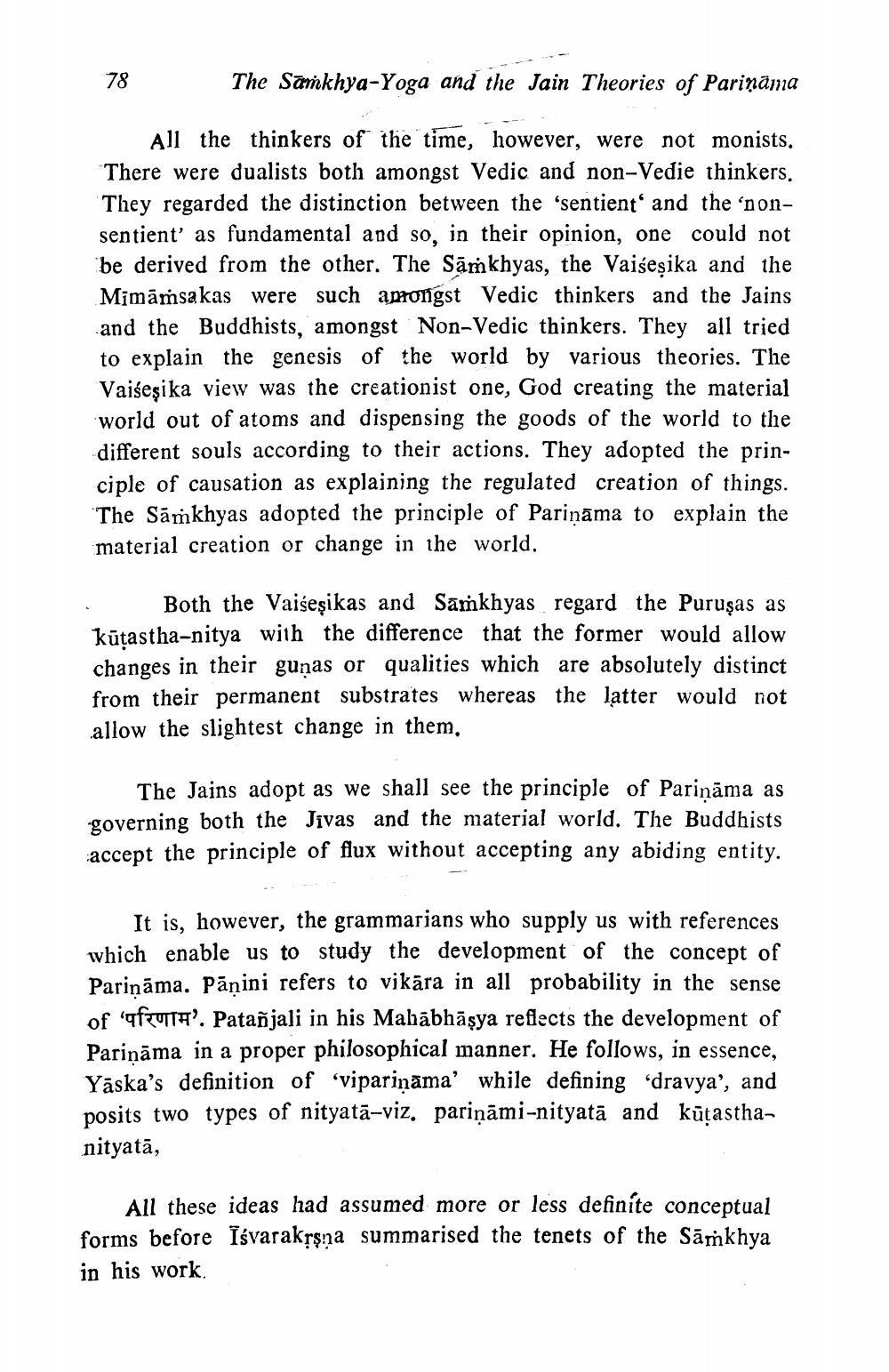________________
78
The Samkhya-Yoga and the Jain Theories of Pariņāma
All the thinkers of the time, however, were not monists. "There were dualists both amongst Vedic and non-Vedie thinkers. They regarded the distinction between the 'sentient and the ‘nonsentient' as fundamental and so, in their opinion, one could not be derived from the other. The Samkhyas, the Vaiseșika and the Mimāṁsakas were such amongst Vedic thinkers and the Jains and the Buddhists, amongst Non-Vedic thinkers. They all tried to explain the genesis of the world by various theories. The Vaišeşika view was the creationist one, God creating the material world out of atoms and dispensing the goods of the world to the different souls according to their actions. They adopted the principle of causation as explaining the regulated creation of things. 'The Samkhyas adopted the principle of Pariņāma to explain the material creation or change in the world.
Both the Vaiseșikas and Samkhyas regard the Puruşas as kūtastha-nitya with the difference that the former would allow changes in their guņas or qualities which are absolutely distinct from their permanent substrates whereas the latter would not allow the slightest change in them.
The Jains adopt as we shall see the principle of Pariņāma as governing both the Jivas and the material world. The Buddhists accept the principle of flux without accepting any abiding entity.
It is, however, the grammarians who supply us with references which enable us to study the development of the concept of Parināma. Panini refers to vikāra in all probability in the sense of 'RUTH'. Patañjali in his Mahābhāşya reflects the development of Parināma in a proper philosophical manner. He follows, in essence, Yaska's definition of vipariņāma' while defining 'dravya', and posits two types of nityatā-viz. pariņāmi-nityatā and kūțasthanityatā,
All these ideas had assumed more or less definíte conceptual forms before Iśvarakrsna summarised the tenets of the Sārkhya in his work




